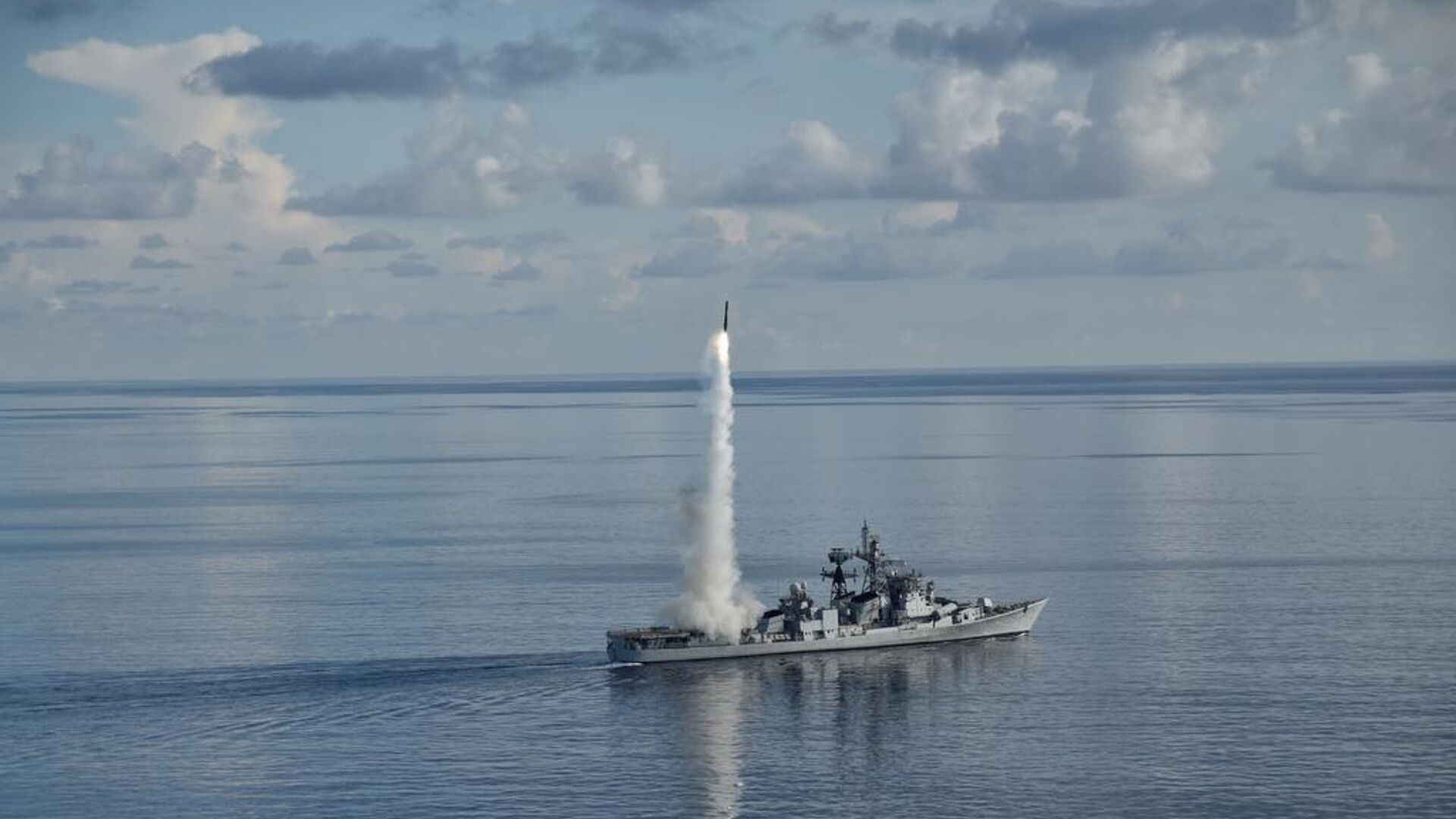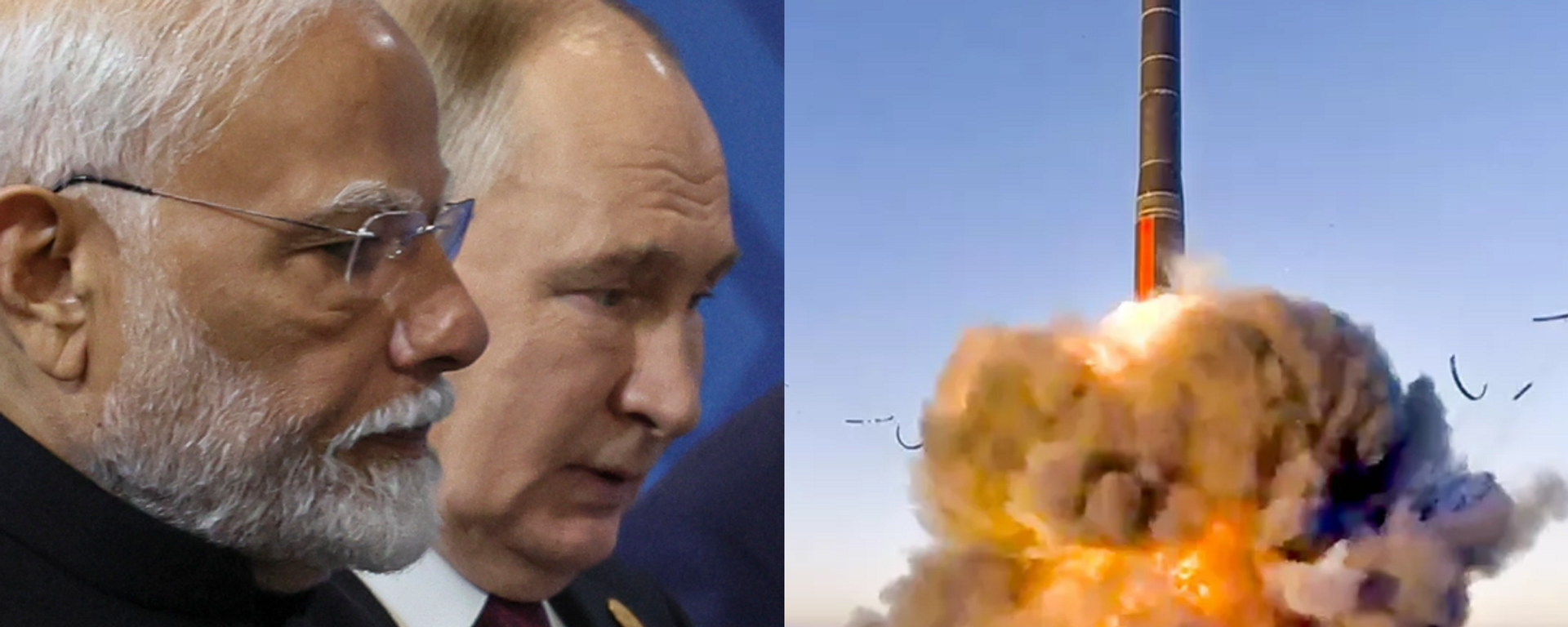India Eyes Hypersonic Edge Amid Evolving Air Defense Threats
20:07 28.07.2025 (Updated: 20:13 28.07.2025)

© Photo
Subscribe
Hypersonic missiles are taking the world by storm, particularly after Western air defence systems failed to neutralise the Russian projectiles of such nature during the present conflict in Ukraine.
India has set its eyes on becoming a hypersonic superpower amid a shift in modern warfare, with stealth aircraft, unmanned combat aerial vehicles (UCAVs), and intercontinental ballistic missiles (ICBMs), taking center stage in aerial battles.
Last week, Defence Research and Development Organisation (DRDO) chairman Samir V. Kamat exhorted the nation's scientific community involved in developing cutting-edge military platforms to focus on mastering hypersonic systems in a bid to tackle emerging threats emanating from high-end air defence systems.
He stressed the need to create innovative missile designs, having strategic surprise elements to guarantee India's success in wars of the future.
"What Dr. Kamat said reflects the urgency of the moment. The world is entering a phase where traditional missile systems are being increasingly challenged by advanced integrated air defence networks, especially those fielded by advanced militaries," Gaurav Kumar, who is a researcher at the United Service Institution of India (USI), told Sputnik India.
Unlike existing ballistic or cruise missiles, hypersonic weapons combine extreme speed (Mach 5+), manoeuvrability, and unpredictable flight paths, making them nearly impossible to intercept with current air defence systems, he added.
For India, mastering hypersonic tech is vital because it directly impacts its second-strike credibility, rapid response capability, and ability to project power in contested regions like the Indo-Pacific. That's why India tested the Extended Trajectory Long Duration Hypersonic Cruise Missiles (ET-LDHCM) under Project Vishnu last week, the think tanker noted.
"Russia has set an operational benchmark on the dominance of hypersonic assets in the ongoing conflict with Ukraine. In November 2024, the use of Oreshnik surprised the world. Later, Russia showcased its Avangard hypersonic glide vehicle that is capable of manoeuvring sharply during flight, making interception virtually impossible," Kumar underlined.
These all-Russian assets proved that no matter how advanced Western air defence systems (deployed in war) are, they struggle to detect and intercept these platforms, which is a game-changing capability. Therefore, hypersonic missiles will play a dominant role in future wars because of their hard-to-detect capability and ability to load nukes at that speed, he reckoned.
Thankfully, India is learning the right lessons from its long-time strategic partner, Russia. The work being done at DRDO, especially under the Hypersonic Technology Demonstrator Vehicle (HSTDV), and the inclusion of hypersonic missiles in the country's Ballistic Missile Defence (BMD) programme, is a welcome step, the defence commentator highlighted.
"Also, if reports are to be believed, India and Russia are on course to revive the BrahMos 2K project, where the latter is set to offer the former its 3M22 Zircon cruise missile technology to co-develop the hypersonic version of the BrahMos. The co-development of this missile is expected to be finalised during Russian President Vladimir Putin's visit to India later this year," Kumar underscored.
Hypersonic missiles are essential for India's security, emphasised retired DRDO scientist Ravi Gupta.
India has definitely emerged as a missile power. Today, India has mastered the complete spectrum of missile technology - Whether it is related to a missile's components, the applications (both tactical and strategic), the range (from short to intercontinental), or the engine, he explained.
In recent years, military tech has taken a quantum jump. For example, the incorporation of stealth in aircraft allows them to evade enemy radar, which poses a serious threat to India's national security, the former DRDO official argued.
"One of the most important ways to counter such technologies is hypersonic missiles. For the uninitiated, the time taken from the launch of a hypersonic missile to hitting the target is barely a few seconds, so there is hardly any time left with the adversary to react to a hypersonic weapon. The beauty of India's hypersonic missiles is that the nation's enemies will only have that much time to pray to God, because they will not be able to stop them from destroying their vital assets," Gupta said in an interview with Sputnik India.
Interestingly, India has both defensive and offensive technology in the hypersonic domain. Not only does India have the technology to fire a hypersonic missile at its rivals to cripple their military infrastructure, but it also possesses the expertise to prevent a similar attack inside its territory, the strategic affairs specialist pointed out.
India's ballistic missile shield provides protection from all kinds of incoming missiles, including hypersonic projectiles. In fact, the country is now among the very few sovereign states that can destroy a hypersonic weapon both in Space and Earth's atmosphere, he remarked.
"India's hypersonic missiles deter the enemy from launching an attack, acting as a deterrent because the country's adversaries realise that the destruction caused by them will be colossal, and perhaps this is the reason DRDO describes these systems as 'weapons of peace'," Gupta concluded.


